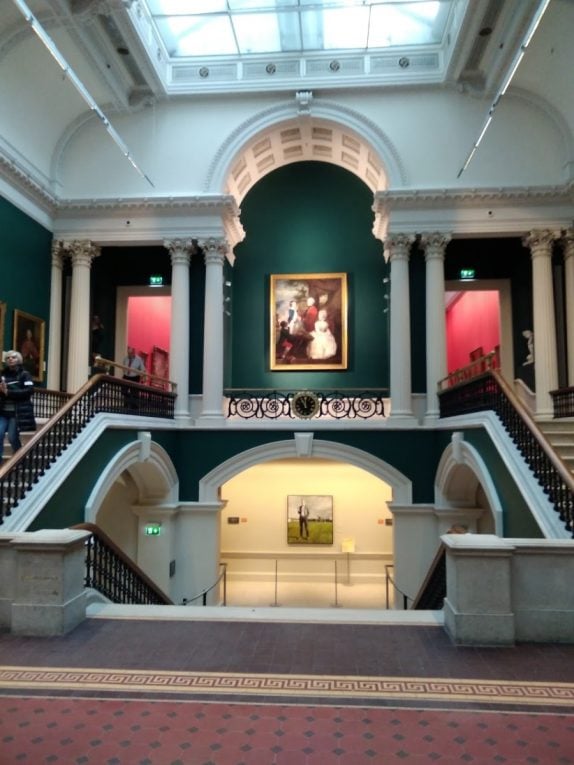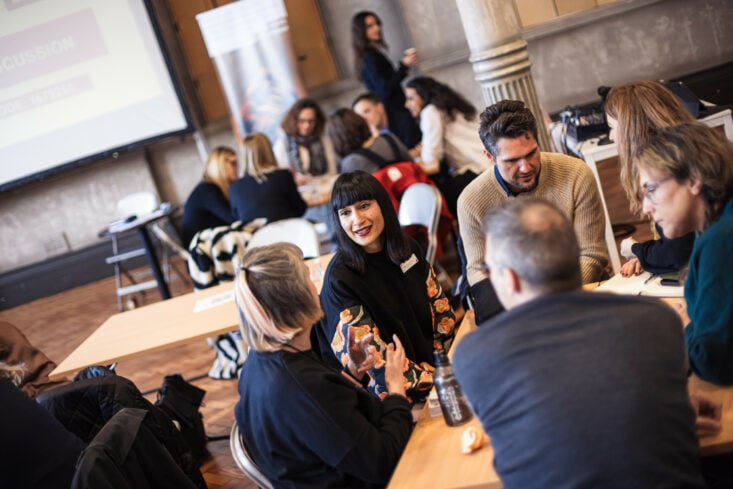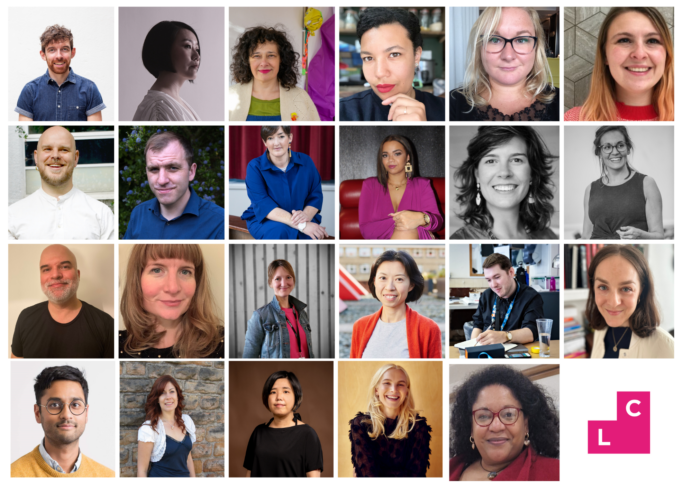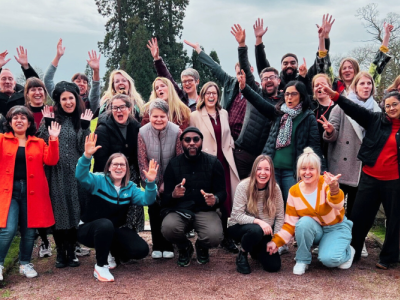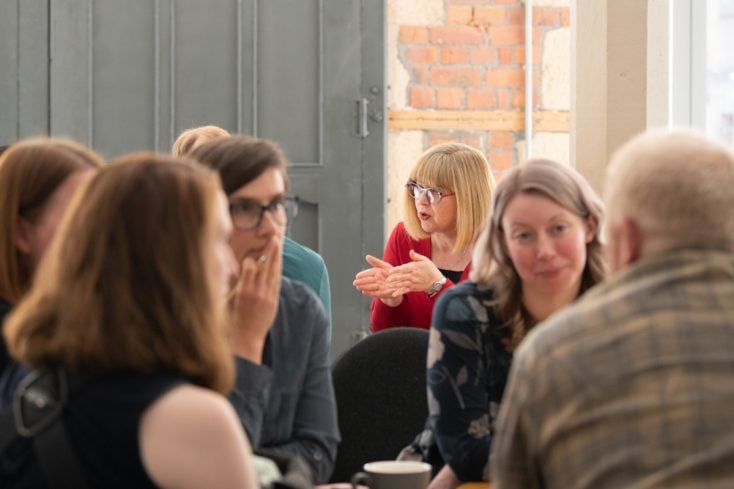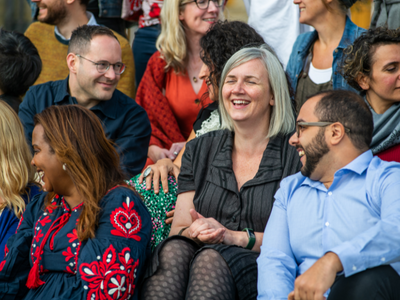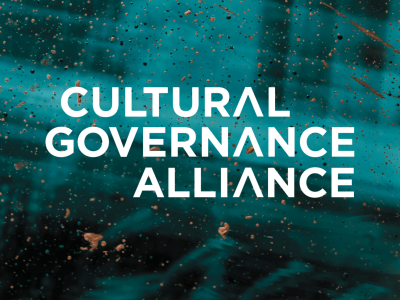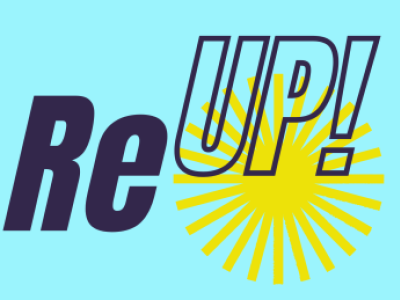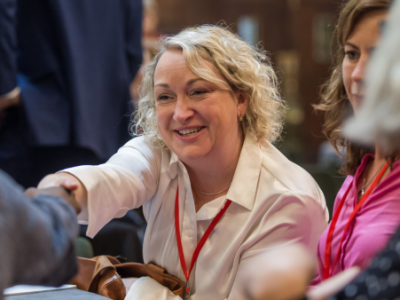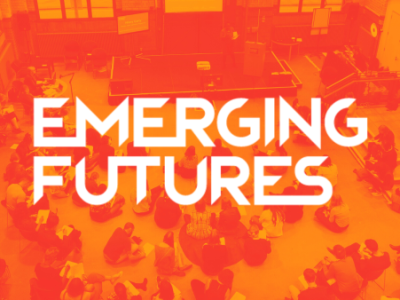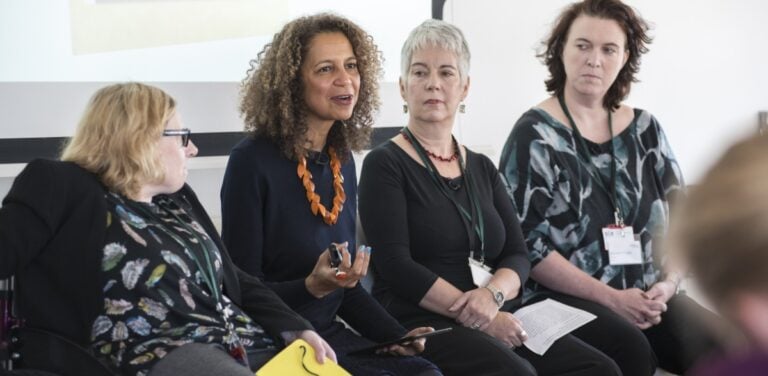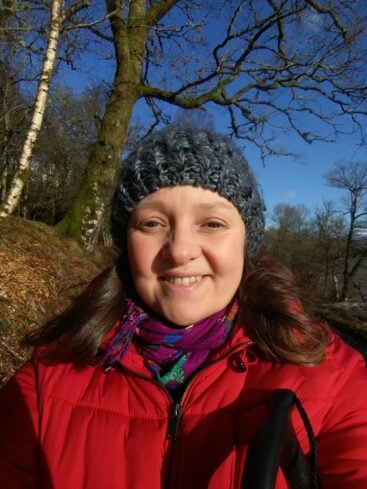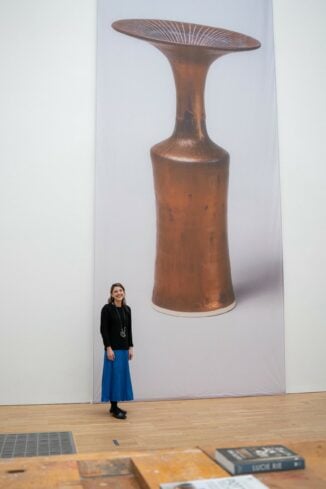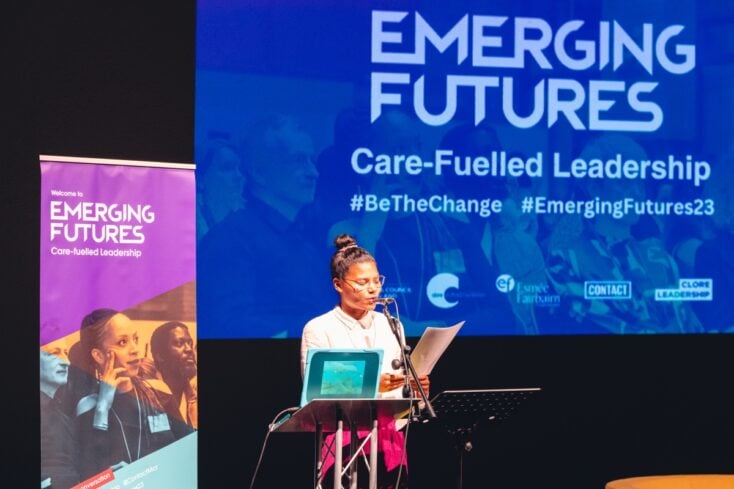It’s (not) Complicated: Leading in a Complex World
Clore 14 Fellow Alice Kershaw examines how systems thinking impacts upon concepts of leadership within the cultural sector.
This paper examines the developing area of systems thinking and how it impacts upon concepts of leadership within the cultural sector.
Introduction
An alternative title to this paper could have been “how you solve rather than create a problem by building a wall”.
One of the first visits I made whilst on Clore was to Darlington, to speak to sculptor, thinkerand project manager Ewan Allinson, who was recommended by a colleague when I said I was interested in talking to someone about leadership in partnership. As I was drafting this paper, a tweet from him popped up which summed up why his approach is so fantastic.
Ewan used his skills in dry stone walling to get the insight he needed from local farmers, knowing that they would value this approach and that this action would be the little bit of leverage he could use in order to get what he needed from them. Ewan is an example of the type of leader we increasingly need; he has learnt how to take different approaches in order to lead in a complex world. As he said when I visited him in the Tees Valley, leaders need to work with both “wit and sweat” to make change happen.
One of the biggest issues for leaders today is how to lead in an uncertain and changing environment. The jargon term ‘VUCA’ (volatile, uncertain, complex and ambiguous) is gaining currency in policy parlance for this reason. It feels as if things are constantly changing, and that the pace of change is accelerating. This isn’t a totally false perception; technological advances are increasing in frequency, the environment is changing, and cultural and societal changes are affecting larger and larger groups of people.
Certain situations benefit from linear engineering-based processes of change, done after considered study of the environment, and research on and understanding of the complicated processes that an organisation has under its direct control. This approach may have the desired impact and work well for certain situations, such as the task of fixing a car engine. Where situations or systems are ‘complicated’ all of the information that could be known about an issue can be clearly identified eventually. Engineering processes are often complicated because they can be defined and catagorised. Leaders in these situations know what lever they need to press to create which response. These systems respond well to a more traditional, top-down leadership and clear responsibility and delegation, rational and logical decisions being made and smooth defined and often repeatable ‘step by step’ processes. All well and good for engines and microprocessors.
However, when a reaction or leadership position better suited to a complicated but logical model is applied to complex situations such as social issues, for example wellbeing and health outcomes, this way of working may not work, or in fact may have unintended consequences which mask deeper, more profound ways of making change. Agile methodologies from technology development identify and respond to this,. Creating apps and similar products means building something that can interact with both technical systems, and human reactions, emotions and foibles. Working in an iterative way allows for user input across the development cycle, which makes a better product than planning everything out in advance and launching a complete product in one go. This approach recognises that responding to complexity is about having emotional intelligence as well as technical skills, and means that approaches are tested in the live environment rather than launched as ‘final’ products, which may function well on paper but which might not withstand the real world.
So what can you do about this as a leader?
In this operating environment, where it seems harder than ever to predict what will happen in terms of democracy and policy change, increasing numbers of organisations and funders are looking at working with a more systems-thinking based methodology in order to make change in an effective way. They seek to really identify where they can leverage influence, and find potential in the systems within which they and their organisations are embedded.
In its report released earlier this year, New Philanthropy Capital (NPC) describes how systems thinking deals with the root causes of deeply ingrained social issues in order to make changes. This involves taking a hard look not just at the issue and those impacted by it but more crucially turning the reflecting lens around to look at the organisation itself. This will involve considering how it works and influences within such a system. It will also involve challenging the self and other individuals within the organisation about views that may appear ‘common sense’ but may have systemic origins.
Systemic beliefs may be so ingrained as to be part of the furniture. These may include thinking that something ‘isn’t for me’, that spaces are not places to spend time, that certain careers are not viable options. These are not something the organisation can solve on its own; they all have systemic roots in education, the family environment and the media. The issue, however, is also within organisations which may find such systemic thinking makes it appear that people are ‘hard to reach’, when in fact they are easy to ignore. These barriers therefore exist within the organisation as well as in the system, and these kind of issues can be made visible where systematic approaches and a real dose of self-awareness and reflection occur.
The authors of the NPC report highlight that change isn’t technical, it’s personal. Rather than linear progress towards a goal where all the actors are known and predictable, a.k.a a complicated situation, systems thinking allows and supports responses in a complex world of interlinked systems, closer to the real living, breathing, sometimes irrational, sometimes unpredictable world in which people actually live.
Three tips for leading in complexity
1. Trust the process
The key principles and process of systems thinking is to begin by identifying needs and assets within an organisation, not all of which may be obvious. For example, a funder may have money, but may also convene power through its networks. It is important to identify and engage with all of the multiple actors and to map the system, ideally with others as a group exercise. Because influence is dispersed, it is therefore important to ensure leadership is also dispersed to allow the influence to be leveraged. It also needs to be a system which has feedback within it, so a systems thinking organisation also needs to ensure it is creating and nurturing a learning culture.
This cycle of mapping, and learning from the maps, may go around a few times. Learning feeds back into the understanding of assets and so on. The value is in the process of undertaking this work as much as in the outputs, as it makes visible to those taking part where they sit within the wider world and how people connect. Then you can begin to treat the system as if it is complex, iterating and piloting new approaches rather than trying to reach the perfect solution, then feeding the learning back in again.
In a blog on systems change for London Funders, Rebecca Warburton and Alice Evans describe that without identifying and addressing the root cause, or causes, of issues, it is likely that organisations might not be solving issues but instead be mitigating or covering them up, not creating true change. It may not be straightforward to identify these issues, so that’s where trying things out, testing and learning from things can have big benefits for both organisations and their leaders.
2. Sweat your assets and look for potential in the system
Once leaders have worked out where they sit in the system, they can work out what they can use for leverage. Funders, such as Heritage Lottery Fund, the one I work for, are a particular type of player in systems, as through their strategy and assets –including their financial input, convening power and networks – they can exert considerable gravitational pull and influence, and create ecosystems of their own. A number of funders, such as LankellyChase, Big Lottery Fund and Paul Hamlyn Foundation, are taking more systemic approaches to their organisations, to use this particular method to solve the problems that their existing programmes and approaches are not. This may involve more relational forms of grant giving, devolving decisions to lower levels and taking more risks on new approaches in order to learn from them.
Looking for the leverage points and potential in the system and taking creative, innovative approaches to systemic problems is something many cultural organisations are well suited to and have a strong record in doing. They may not always characterise it as systems thinking, but they have a key role to play in solving knotty problems, due to their often ingrained approach to innovation, risk taking, testing, pushing boundaries and partnerships. These can result in projects such as those run at the Irish World Academy of Music and Dance in Limerick, which works with people with Parkinson’s using square dance, a project which is seeing beneficial results in wellbeing outcomes. Similarly, at Sage Gateshead, weekly music classes for families with fostered and adopted children help create stability and bonding as well as supporting the development of music skills. In the Stonehenge landscape as part of the Human Henge project, the World Heritage Site and its monuments are being used as a therapeutic tool, with service users of mental health agencies engaging with the site and seeing positive outcomes. UCL Museums is doing work on putting museums on prescription, and a number of organisations are looking at social prescribing and where what they offer can fit into the delivery of wider societal needs.
In Dublin National Gallery, the project team realised that they could influence a system that doesn’t usually get considered in terms of wellbeing, namely the mechanical and engineering systems being replaced during refurbishment, all of which were developed and delivered in terms of impact on the visitors’ emotions to create a more welcoming space for all.
Cultural organisations are doing all kinds of activities where the outcome may be having an impact on social issues, such as better wellbeing, rather than the creation of an artistic output. By doing this they are having an impact on systems they work within as organisations and using their leverage outside the purely ‘cultural sector’ to create change.
3. Give away your power
Warburton highlights that, for systems thinking to work effectively, the whole process has to be based around collaboration, and that top down ‘command and control’ leadership won’t work for this approach. This is because everyone has a role in the system, and their own connections, links and points of influence. This may mean that the leadership required to affect change in a world of complexity is one with less directive impulses and behaviours. Direction won’t create the change that the organisation wants to see because it will not be able to benefit from all of the linkages in the system, only the ones the leader has.
Organisations, including funders, working in this area and on issues that are hard to solve need to similarly be comfortable with sharing their power, knowledge and influence, becoming more open and also more daring in their approach. This may involve piloting with an inbuilt action learning method, more focus on evaluation and feeding information back to those who make decisions as well as the sector in which they work. It will likely also involve moving away from transactional approaches to those who are more relational in nature, in order to delegate some of their authority to where others have expertise that can support positive change.
Existing examples of dispersed leadership, and sharing of knowledge and power for wider benefit, exist in projects such as Landscape Partnerships, such as the one I visited in with Ewan in Tees Valley (Heart of Teesdale). These rely on a mix of organisations and individuals working at all levels and scale to make change in discrete areas of landscape, and can also often involve giving small-scale local community grants of their own on behalf of the main funder (HLF). Heart of Teesdale brought art, activities and capital interventions into the landscape to shape the way it is perceived and used, bringing together landowners and artists in new ways, and therefore creating new outputs and outcomes. This only worked because of people like Ewan giving up their power as project managers to provide services for those they had to engage with, and getting their feedback as a result, by doing favours and building walls.
Balancing leadership roles was also seen on my study visit to Malta and Gozo. Wirt Ghawdex in Gozo, an entirely volunteer-run organisation, manages the main visitor centre for the Citadel, owned by the local government, on an equal footing that supports both organisations. They hire volunteers and staff, making small surpluses for their own projects, as well as developing their own projects on government-owned sites. The flagship museum being built by Heritage Malta in Valletta as part of its year as Capital of Culture is Muza, the community museum, with all collections and displays chosen by local people, entirely curated by the community within which it sits.
Bridge organisations such as Tyne and Wear Museums also seek to influence change within a region by bringing people together to make decisions on funding in the arts; they manage funding on behalf of Arts Council England, but don’t make decisions themselves. Instead they support others to do so using their frameworks, to benefit from the knowledge within the system that they cannot access alone.
How to identify complexity
Any processes involving people will be complex rather than complicated, as not all of the factors are known and repeatable. People come with preconceived ideas, emotional responses and subjective individual perspectives. This means organisations are always working in complex systems by default. Identifying these is the first step to working out what leverage an organisation has.
Agile working isn’t the only methodology that supports dealing with complexity and making it visible. I want to highlight a course I did as part of my Clore Programme Plan. LEGO ® SERIOUS PLAY ® (LSP) is all about constructing and building with 3D blocks in groups of two or more. Where it becomes useful to considering complex issues is that the framework for using it includes a method of working with teams, which allows the system to be built out of LEGO from individual perspectives, using storytelling and metaphor to share understanding, and then connected to those of others. The connections can then be manipulated and moved to identify the links between elements of the system and what happens if they alter.
Other approaches to identifying systems can include mapping with pen and paper. Because of the nature of what is being mapped these can appear quite ‘scrappy’ and unpolished in nature, but are powerful in concept. The whole point is it will never be perfect, it’s only ever a best guess. By mapping and modelling the system, whatever tools they use to do it, leaders can identify where they can let the light in by using their skills, voice and reach in a different way, on elements of the system they may not have previously considered.
No-one is neutral; the system has an impact on everyone
On a daily basis, we interact with a huge number and variety of systems, most of which are so everyday as to be invisible, such as healthcare, education and the environment. They are not so much logical chains but interlinked webs of different actors and connections. That difference is significant because the best laid plans need to be able to flex when faced with this kind of system. We can begin to understand the system by identifying and understanding the links between aspects of it, starting to answer the question of what causes and effects exist around the systems within which our organisations are situated.
The essence of this approach is knowing that the way you see and experience the world is not neutral and is influenced by society, so you will interact with systems in a certain way and from a certain perspective as a result. Looking at the systems that you interact with helps give you the start of a toolbox to work out where your actions might have the most impact in your individual or organisational ecosystem.
The best approaches to complexity are from groups who understand that they exist in a complex society, not a complicated one. They understand that what they have always done will not solve the issues they can see, and they make the best of their assets and networks. New leadership approaches will involve pushing boundaries, sharing power, and seeking positive outputs and outcomes through bringing together different aspects of the systems within which they exist. Leadership may be collaborative or shared, but the projects that leverage change would not have had the benefits they have delivered if leadership was dictatorial and directive, they would not have been able to benefit from the rest of the system. In a world that is only getting more complex, leaders will have to collaborate, share and learn to make change happen. One wall at a time.
Themes Alumni Journeys Qualities of Leadership Sector Insights
